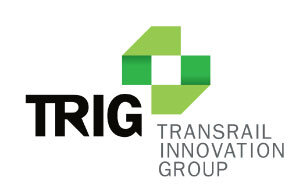TRIG Tips - Benefits of Closed Loop Loading
There seem to be as many approaches to measurement in terminal transloading operations as there are actual terminals, so it can be complex in determining which approach to take. And, post COVID-19, there will be new safety approaches all operations will be compelled to adopt.
Based on the hundreds of terminals we've visited, one thing TRIG has observed is regardless of the process and technology in operation, a closed loop loading system is far superior. Below are reasons our clients have shared for preferring closed loop.
We hope these provide some food for thought when looking at ways to improve efficiency and enhance safety in your terminal!
Closed loop loading requires less operator time as the tank car isn't opened, vented or dipped:
Often the amount of residual product (heel) inside a rail tank car is unknown prior to loading. Therefore, terminal operators measure this heel to ensure tank cars are not overloaded. This is typically done at the loading rack either through the manway hatch or by dipping through the vent valve. If a tank car needs to be opened for any purpose, the process takes additional time because operators must:
Put on PPE to protect themselves from exposure to potentially hazardous commodities
Open valves and / or remove bolts from the manway cover
Depressurize the tank car (as necessary)
Perform and record manual measurements
Close, replace, and/or retighten bolts and gaskets
As we move forward in a post COVID-19 environment, the ability to maintain closed loop will be impactful for emerging regulations for operational health and safety. Using TRIG’s level measurement solutions, operators can safely verify the presence of heel remotely without opening the tank car. Additionally, using TRIG software, during loading the exact amount of heel is continuously calculated, along with level measurement (volume). This results in a much more accurate measurement than is possible by opening and/or dipping a tank car.
Closed loop loading reduces operator exposure to toxic fumes from opening tank cars:
In an open loop system, operators are required to "vent" the tank car before opening, meaning they open a valve to relieve the vapor pressure that builds up inside the tank car during transportation. During venting, gases (potentially hazardous in nature) are inevitably released into the surrounding atmosphere and expose operators to unnecessary health risk. These emissions are completely avoidable and place a burden on both operator safety and the environment.
By using TRIG's level measurement solutions, tank cars remain closed to provide additional safety for workers and the environment.
Closed loop loading means you need to check and replace fewer gaskets on your tank car manways:
According to Association of American Railroads (AAR) regulations, every time a tank car manway cover is opened and closed, operators must ensure all closures are tight. As a result, there is a greater chance of non-accident releases (NARS) due to gasket damage and improper torqueing. AAR data indicates that over 30% of NARS are a direct result of opening and securing the manway.
Using TRIG’s level measurement solutions, operators can build closed loop systems to avoid opening the manway cover, reducing the need to check and replace gaskets on a regular basis.
Closed loop loading reduces possible product contamination due to tank cars being opened in inclement weather:
If tank cars are opened for any reason during transloading, and the transloading area is not covered adequately, there is significant risk of product contamination due to precipitation. Depending on the type of product (e.g. jet fuel), this contamination may put the product out of specification and lead to returned product.
TRIG’s level measurement solutions provide 100% visibility, from the inside out. Tank cars remain closed during the entire operation.
Closed loop loading, combined with automated level measurement, decreases the possibility of error with less manual intervention:
TRIG's level measurement solutions automate the manual measurement and transcription processes performed by operators. Post COVID-19, this further reduces the labor hours necessary to service the loading and unloading of tank cars.
TRIG’s level measurement solutions perform measurements automatically and accurately. All of the measurements are stored digitally, validated, and transferred to key operational systems automatically with no chance for “fat-finger” typing mistakes. In addition to level measurement, TRIG’s robotic process automation (RPA) solutions provide opportunities for eliminating manual transfer of information in other existing transloading processes.
Contact us today to find out how TRIG’s level measurement automation solutions can help you achieve 100% visibility in your commodity transportation, as well as increase operator safety!





